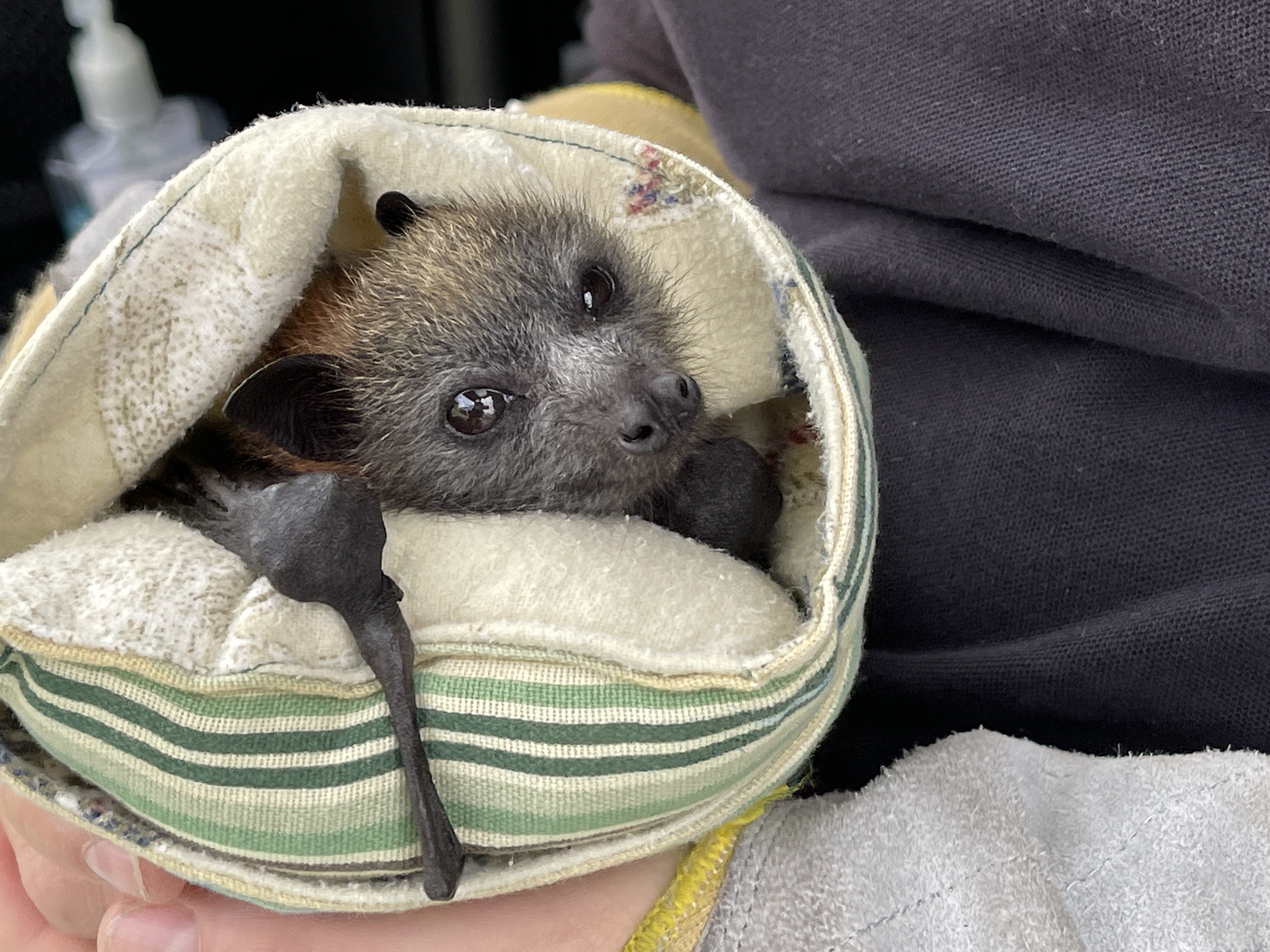Protecting Sydney’s Koalas: Why Corridor Advocacy Is Now Critical
December 2025
For emergency rescue support 24/7 please call 1300 094 737

Wildlife rescuers and carers rely on veterinary clinics and wildlife hospitals to triage and treat injured Flying-foxes. To explore the need for expanded capacity to treat Bats and Flying-foxes, we caught up with Dr Tania Bishop, to discuss how extreme heat events impact our Flying-fox populations.
Dr Tania Bishop is the WIRES Wildlife Veterinarian and has an extensive background in veterinary science, with over 20 years of experience assisting Australian wildlife. Recently, Tania was a keynote speaker at the Australian Wildlife Rehabilitation Conference, where she discussed the impact heat events have on Flying-fox colonies. She started working in the heat-stress rehabilitation area around 2012 as it became a more prominent issue for our wildlife and is well-regarded in the field.
We are currently running round two of the WIRES Vet Vaccination Grant Program to cover the costs of vaccinations for vet clinic staff nationally. This program has been developed to cover the costs of Lyssavirus vaccinations for vet clinic staff in all Australian States and Territories.
To learn more about the program and apply, click here.
What is heat stress and why is it so high-risk for Flying-foxes?
Heat stress occurs in Flying-foxes when the body is unable to cool down, generally, this happens when the temperature exceeds 42° or when the temperature remains high for extended periods. This high-heat environment can cause extensive internal-organ damage which can cause death or have long term effects on health.
Due to elevated temperatures correlating to heat stress, most events happen in summer, when Flying-foxes are lactating and pregnant. This is one of the reasons why it is such a threat to our local populations.
Heat stress turns to heatstroke when there is enzyme damage due to heat.
What mechanisms do Flying-foxes have to cope with high temperatures?
Flying-foxes have two main mechanisms to deal with heat, radiant cooling and licking their extremities. Radiant cooling is a process of fanning their wings, pushing hot blood out to their wings and flapping to cool. This process is only effective when the ambient temperature is lower than their body temperature, which is becoming an increasing issue.
The second way of losing heat is by licking their extremities and lowering heat by evaporation. This is effective, however, in low humidity environments, the evaporation can occur too quickly and leave the individual dehydrated. In high humidity, the water drops can not escape, and the individual gets stuck in a heat cloud. When I began researching postmortem examinations of bats, I realised there was a correlation with the level of humidity.
You’ve been working on a sprinkler system project to assist colonies in extreme heat events, could you explain how this works?
Unfortunately, it can be very difficult to attend heat-stress events. Often if a wildlife carer goes in to rescue 10 or so Flying-foxes that are low enough in the foliage to be offered help, the rest of the colony can fly off- using the last of their energy.
This is where the idea of an automated cooling system came in. The initial concept was taps, which would automatically turn on with specific environmental parameters. We set up these mid-level sprinklers rather than misters so they would not add humidity to the environment but will spray directly onto bats and assist with cooling.
Why are the sprinklers are put in at the mid-story levels?
There is a big difference between a camp in the upper/middle/lower levels of the canopy or a camp that only occupies the lower levels. A camp living in an intact vegetation structure offers us the opportunity for this cooling system to be really effective.
Mid-stories means you are only hitting bats that are coming down and seeking the cooler areas of the canopy, not those who are higher up and still coping.
What can else we do to assist large Flying-fox colonies as these extreme heat events become more common?
We know new things now that we did not know ten years ago, lots of people want to help heat-stressed Flying-foxes. We need to work collaborative between vets and wildlife are to better communicate the best way to help these essential pollinators.
It is an evolving challenge, especially with these extreme heat events becoming more common. Things change so quickly, and we will change what we do. It is an evolving challenge.
Mental health support is available for those who have assisted with heat stress events. Euthanasia and loss of life can be traumatic, it can be hard to understand the complexities of the emotions behind it. If you are a WIRES member and would like assistance accessing mental health services, you can do so on the members website blog.
We also suggest This Way Up to access online courses and other resources to support and promote good mental health.
Stay in touch and get our regular rescue stories, WIRES updates and a free copy of our 15 Ways to Help Wildlife ebook
November 2025
November 2025
September 2025
August 2025
August 2025